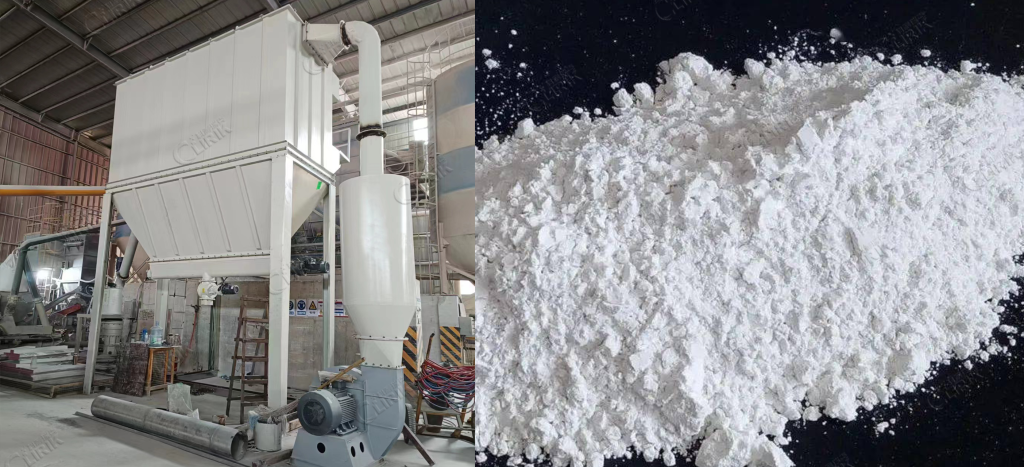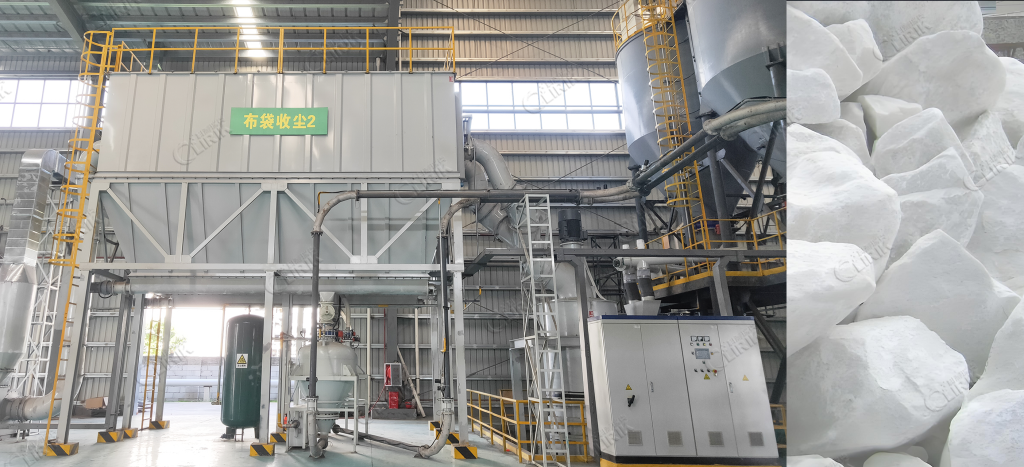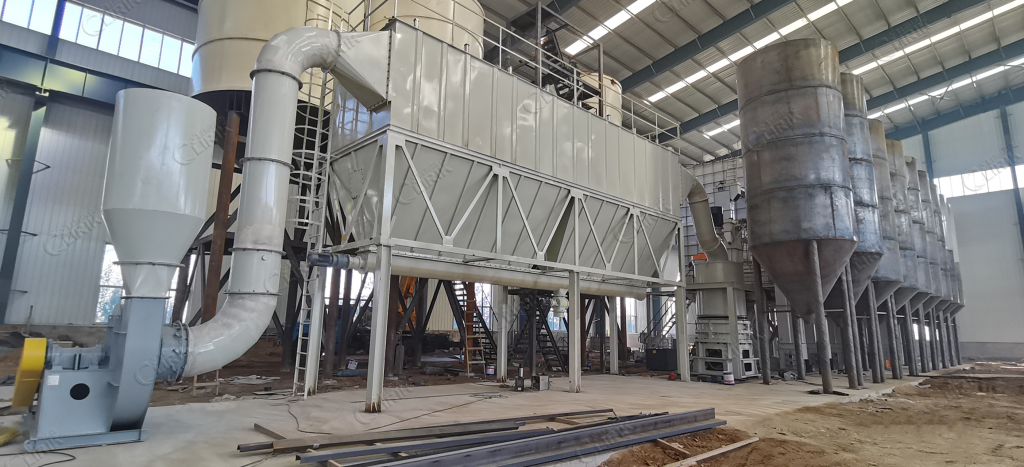In the context of modern industrial production, the need for ultrafine powders is escalating across various industries. The HGM ultrafine grinding mill has become a go-to choice for enterprises aiming to achieve ultrafine material processing efficiently. This article delves into the detailed working principle of the HGM ultrafine grinding mill, emphasizing its efficiency, environmental friendliness, and energy-saving capabilities.
The HGM ultrafine grinding mill consists of several key components, including the main unit, classifier, dual-cyclone powder collector, pulse dust removal system, high-pressure blower, air compressor, and electrical control system. Before the grinding process begins, large chunks of material are preprocessed by a crusher to be broken down into smaller particles, ensuring they meet the feed requirements for the subsequent grinding stage. These smaller particles are then conveyed by a bucket elevator into a storage hopper and fed uniformly into the main unit for grinding by an electromagnetic vibrating feeder.

Once the material enters the main unit, the main unit motor drives the main shaft and turntable to rotate via a reducer. The roller pins on the edge of the turntable propel dozens of grinding rollers to rotate and roll within the grinding ring raceway. Driven by centrifugal force, the material scatters to the periphery and falls into the grinding ring raceway. Here, the grinding rollers exert multiple forces, including impact, rolling, and grinding, on the material. Through repeated processing across multiple layers of raceways, the material is gradually ground into powder.
The ground material is not discharged directly. Instead, it is lifted by the airflow generated by the high-pressure blower and carried into the classifier located above the main unit for screening. The high-speed rotating impeller inside the classifier performs grading on the material. Coarse particles that fail to meet the fineness requirements are struck back into the main unit for regrinding by the impeller, while the qualified fine powder that meets the fineness requirements is carried by the airflow into the cyclone powder collector. Inside the cyclone powder collector, the fine powder is separated from the air and finally discharged from the discharge port as the desired finished powder.

The air circuit design of the HGM ultrafine grinding mill is highly ingenious. Except for the section from the blower to the grinding chamber, which operates under positive pressure, the rest of the pipeline operates under negative pressure, effectively preventing dust leakage and ensuring the environmental protection of the entire production process. Additionally, the water vapor evaporated from the material during the grinding process and the gas that seeps in from the joints of the equipment will increase the volume of the circulating airflow. This increased airflow is purified and discharged through a bag filter. This design not only reduces dust pollution but also improves energy utilization efficiency, achieving both environmental protection and energy saving.
The HGM ultrafine grinding mill boasts numerous significant advantages. The grinding rollers and grinding rings are forged from special materials, resulting in a long service life and reducing the maintenance cost of the equipment. The mill also employs advanced mechanical sealing and multi-stage overlapping sealing, providing excellent sealing performance and further enhancing the stability and reliability of the equipment. Under the same conditions of finished product fineness and motor power, the HGM ultrafine grinding mill has a production output one time higher than that of fluidized bed jet mills, stirred ball mills, and ball mills, while consuming 30% less energy, demonstrating high production efficiency and energy-saving effects.

The HGM ultrafine grinding mill is widely used in chemical, building materials, mining, metallurgy, medicine, and other fields. It can process over 100 types of non-flammable and non-explosive brittle materials with a Mohs hardness of ≤6, such as calcite, chalk, limestone, dolomite, carbon black, kaolin, bentonite, etc. With the increasing demand for ultrafine powders in terms of quality and quantity in various industries, the HGM ultrafine grinding mill, with its efficient, environmentally friendly, and energy-saving characteristics, will play a more important role in future industrial production and provide strong support for the sustainable development of enterprises.
In conclusion, the HGM ultrafine grinding mill, with its unique working principle of grinding, environmentally friendly and energy-saving design concept, and efficient and stable performance, has become a leader in the field of ultrafine powder processing. It not only meets the market's large demand for ultrafine powders but also provides strong support for the green development of enterprises, demonstrating a broad application prospect and great development potential.
上一篇: Multifunctional Application of Calcium Carbonate Powder
下一篇: An Article Explains the Specific Process Flow of Dolomite Grinding
Please feel free to write down your requirement in the form below.
We will reply you within 24 hours.
Copyright: Shanghai Clirik Machinery Co., Ltd.All rights reserved
